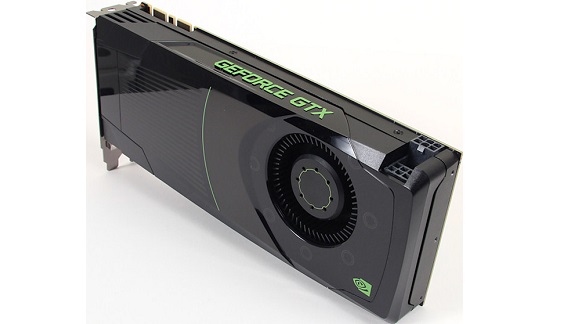GEFORCE GTX 680

GK104 contains 1536 CUDA cores, which is three times more than the GF110 (GeForce GTX 580), 128 texture units (twice as many) and 32 ROPs (but this is a step back, the GF110 has 48 of them). The memory bus width is 256 bits, but it operates at an effective frequency of 6008 MHz. “The neck has become thinner, but longer.” The amount of memory is 2 GB. PCI-E 3.0 interface supported
The GPU has a base clock of 1006 MHz, and the frequency of the CUDA cores is no longer doubled relative to the rest of the components. This is done to save electricity. And indeed, the card kept within the TDP of 195 watts. A rather modest figure for a flagship product (GeForce GTX 580 has 244 W, while Radeon HD 7970 has 250 W), especially in light of NVIDIA's previous "achievements" in this area.
The GPU is manufactured using a 28 nm process technology and includes 3.54 billion transistors - "only" 0.54 billion more than in the GF110. For comparison: the Tahiti chip (Radeon HD 7970) has 4.38 billion transistors.
NVIDIA Kepler architecture
The NVIDIA GPU Kepler architecture was built from the ground up not only for maximum performance in the latest DirectX 11-enabled games, but also for optimal performance per watt. The new streaming multiprocessor structure is twice as efficient as the previous generation multiprocessor structure, and the new geometry engine builds triangles twice as fast.
The result is world-class performance and high image quality on an elegant and energy-efficient graphics card.
GPU Boost technology
Until today, GPUs have run at a constant clock speed when playing 3D games, even if they had the potential to run faster. GPU Boost technology monitors graphics load and boosts clock speeds when possible. As a result, the GPU is always running at its peak performance and delivering the highest frame rate possible.
New anti-aliasing modes
Anti-aliasing evens out the jagged edges of an image, but can be very demanding on frame rates. FXAA is a new anti-aliasing technology that delivers beautifully smooth lines with minimal performance impact.
 |
 |
With Kepler architecture-based GPUs, you can enable FXAA in hundreds of games through the NVIDIA Control Panel. The second mode, TXAA, is an in-game option that combines MSAA, temporal filtering, and post-processing for even higher image fidelity.
| Specifications GeForce GTX 680 |
|



